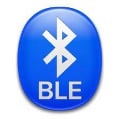What is Low Energy Bluetooth?
Launched in 2010, Low Energy Bluetooth (LE BT), also known as Bluetooth Low Energy (BLE) or Bluetooth Smart and is a variation of the traditional Bluetooth wireless technology designed for specific use cases where power consumption is a critical factor (such as with medical devices).The main difference between Low Energy Bluetooth and traditional Bluetooth lies in their intended purposes and power requirements:

1. Power Consumption: One of the primary advantages of LE BT is its low power consumption. Traditional Bluetooth (Classic Bluetooth) is designed for continuous data streaming, which can be power-intensive, making it unsuitable for devices with small batteries or devices that need to operate for extended periods without frequent battery replacements. LE BT, on the other hand, is optimised for intermittent data exchange and can remain in a low-power sleep state most of the time, consuming significantly less energy.
2. Data Rate:
Classic Bluetooth offers higher data transfer rates, making it suitable for applications like audio streaming, file transfer, and other data-intensive tasks. In contrast, LE BT provides a lower data transfer rate, but this is sufficient for transmitting small bursts of data, such as sensor readings or control commands.
Classic Bluetooth typically offers a longer communication range compared to LE BT, of which is designed for short-range communication, generally within tens of metres.
4. Application Focus: Classic Bluetooth is commonly used for devices like smartphones, laptops, and audio peripherals, where high data throughput is essential. LE BT is more suitable for applications such as fitness trackers, smartwatches, health monitoring devices, beacons, smart home devices, and other Internet of Things (IoT) devices that prioritise energy efficiency.
5. Compatibility: Although LE BT is a separate technology from Classic Bluetooth, most modern devices support both. So, devices with LE BT capability can still communicate with classic Bluetooth devices if necessary.
What are the Advantages of LE BT in Medical Devices?
Low Energy Bluetooth offers several significant benefits when used with medical devices:
-
1. Energy Efficiency:
The low power consumption makes LE BT ideal for medical devices that run on small batteries or need to operate for extended periods without frequent battery replacements. This efficiency is crucial for wearable health monitoring devices, implantable devices, and other medical equipment that must be energy-efficient to ensure continuous operation.
-
2. Wireless Connectivity: Enables medical devices to communicate wirelessly with smartphones, tablets, and other compatible devices. This enables seamless data transfer and real-time monitoring, making it easier for healthcare professionals and patients to access critical information.
3. Portability and Mobility: Medical devices equipped with LE BT can be made compact, lightweight, and portable, enhancing patient comfort and convenience. Patients can carry or wear their devices without being tethered to a specific location, allowing them to maintain their daily routines while being monitored.
4. Remote Monitoring and Telemedicine: LE BT enabled medical devices facilitate remote patient monitoring and telemedicine applications. Healthcare providers can remotely access patient data, track vital signs, and intervene when necessary, reducing the need for frequent in-person visits, especially for patients in remote or inaccessible areas.
5. Real-Time Data and Analytics: Medical devices are able to transmit real-time data, such as heart rate, blood glucose levels, blood pressure, and other vital signs using LE BT. This data can be instantly analysed and processed, enabling quick identification of health trends or potential issues that require immediate attention.
6. Interoperability: It is a widely adopted standard, and most modern smartphones and tablets support it. This ensures interoperability between LE BT enabled medical devices and a broad range of consumer electronic devices, streamlining data transfer and data analysis.
7. Security and Privacy: LE BT incorporates security features to protect sensitive medical data during transmission. Encryption and authentication mechanisms help safeguard patient information, ensuring compliance with UK’s privacy regulatory body, the Information Commissioner’s Office (ICO). The ICO's primary role is to uphold information rights, which includes enforcing the provisions of the General Data Protection Regulation (GDPR) and the Data Protection Act 2018.
Overall, Bluetooth Low Energy provides a reliable and efficient wireless communication solution for medical devices, enhancing patient care, enabling remote monitoring, and advancing telemedicine practices. Its energy efficiency, compatibility, and security features make it a suitable choice for a wide range of medical applications.
.jpg?width=342&height=509&name=OrtusAcademy(YELLOWGradient).jpg)



Leave Comment